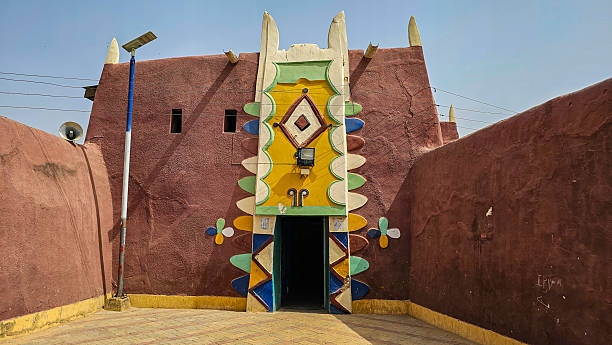Nigerian Art and Craft: A Journey Through Creativity

Nigerian Art and Craft is among the most fascinating aspects of the African culture heritage that carries centuries of history and traditions and innovativeness. Nigeria has a rich artistic heritage that has been through the age of the terracotta figures of the Nok people, through the carvings of the Benin people using wood and the colourful fabrics produced using the traditional dyeing techniques.
As a traveler, and an art lover, there is more than personal enjoyment of talent in the exploration of the Nigerian Art and Craft, it is a cultural experience. It gives one a glimpse into the soul of the country, with every carving, every piece of fabric or every sculpture, one can read a story of tradition, spirituality and identity. However, when planning to travel to Nigeria in order to experience its culture be it in exhibitions, craft markets or historic sites, it is with the assistance of Go Kite Travel that you can easily secure a Nigeria tourist visa Abu Dhabi or a Nigeria travel visa Abu Dhabi and make this trip not only easy but also unforgettable.
Here is Nigerian Art and Craft: A Journey Through Creativity.
Traditional and historical Crafts.
Nok Civilization
The Nok culture which flourished between 500BC and 200 AD can be attributed as the origin of Nigerian Art and Craft. The art of this ancient civilization was remarkable as it has produced highly preserved terracotta sculptures, which are among the oldest ones in the sub-Saharan region of Africa.
Woodcarving Traditions
Woodcarving is another most traditional type of the Nigerian Art and Craft. Such communities as the Benin and Awka are especially famous with their elaborate wooden sculptures and masks.
Bronze Casting and Metalwork.
Nigeria is traditionally famous in metalwork particularly in brass and bronze which is appreciated all over the world. These objects are the Benin Bronzes and were made in the 13 th -19 th centuries and feature relief and statues which elaborate on the lives of the kings, warriors and court life.
Textiles and Dyeing
Clothes play a leading role in the Nigerian Art and Craft, with colorful fabrics made through a tie-and-dye procedure, weaving, and embroidery. The Yoruba have a cloth called Adire which is done through methods of resist-dyeing and gives the cloth a rather beautiful pattern in indigo and other colors.
Pottery and Ceramics
Another tradition that is long held in Nigeria is pottery. Pottery is both useful and artistic, including cooking pots, as well as ritualistic ones. Calabashes (used as storage and decoration) are commonly carved and painted with intricate patterns and details on them. The designs are often full of cultural meaning making normal objects artworks of identity and spirituality.
Stone and Ivory Carving
The Esie stone figures and the monoliths of Ikom are a symbol of the Nigerian culture of stone carving. Equally, ivory carving has existed long before the modern times, and it was frequently utilized to produce decorative items or ritualized objects. These crafts bring out the diversity of Nigerian Art and Craft and how it can make the natural resources a representative of culture and heritage.
Cultural and Spiritual Meaning.
Ritual and Ceremony
Nigeria art is not just about aesthetics; it is also very important in rituals and ceremonies. Dances, religious rites and festivals are often performed using masks, sculptures and other objects made. As an illustration, the masquerades use carved masks to signify the spirits and ancestors when the community gathers. Such traditions underline the spiritual aspect of the Nigerian Art and Craft.
Status and Power
Art and craft are an aspect that is used to identify status and power in various communities in Nigeria. The royal courts like that of the Benin Kingdom commissioned elaborate pieces of art as a symbol of wealth and authority. Complex beadwork, bronze statues, and embroidered fabrics were the symbols of nobility and leadership and confirmed the significance of art as both a cultural treasure and political symbol.
Why Do you want to visit the Nigerian Art and Craft as a Traveller?
To the foreigners, the Nigerian Art and Craft can also serve as a unique experience merge of culture, history and creativity. The tourists will be able to shop in the local markets where hand made products are sold, visit the museums where ancient artifacts are presented, and also visit festivals where traditional art is presented just as vibrant as ever.
The way Go Kite Travel Makes Your Travels Seamless.
Go Kite Travel is a business that customers can rely on to have their way of enjoying the magic of the Nigerian Art and Craft. They provide professional visa services and hence make it easier to access Nigeria tourist visa Abu Dhabi or Nigeria travel visa Abu Dhabi. Their hardworking staff makes sure that every paperwork and request is processed without any problems and the travelers feel secure. You can be either an art lover, historian, or just interested about the heritage of Nigeria, Go Kite Travel will ensure that your trip is a streamlined and pleasant one.
Conclusion
Nigerian Art and Craft is not only a form of creativity; however, it is the manifestation of a thousand-year history, spirituality, and identity. Nok terracotta figures, Benin bronzes, colourful textiles and so on, these artistic traditions demonstrate the diversity and richness of Nigerian various ethnic groups.
To tourists who want to experience this cultural ride with their own eyes, one has to acquire Nigeria tourist visa Abu Dhabi or Nigeria travel visa Abu Dhabi. This process is also made easy with the experience of the Go Kite Travel so that you can concentrate on exploring unbelievable art in Nigeria. It does not matter whether you are attracted by ancient sculptures, ceremony masks, and colorful fabrics, Go Kite Travel guarantees your adventure to be memorable and to be closely tied to the ingenuity and soul of Nigerian Art and Craft.




